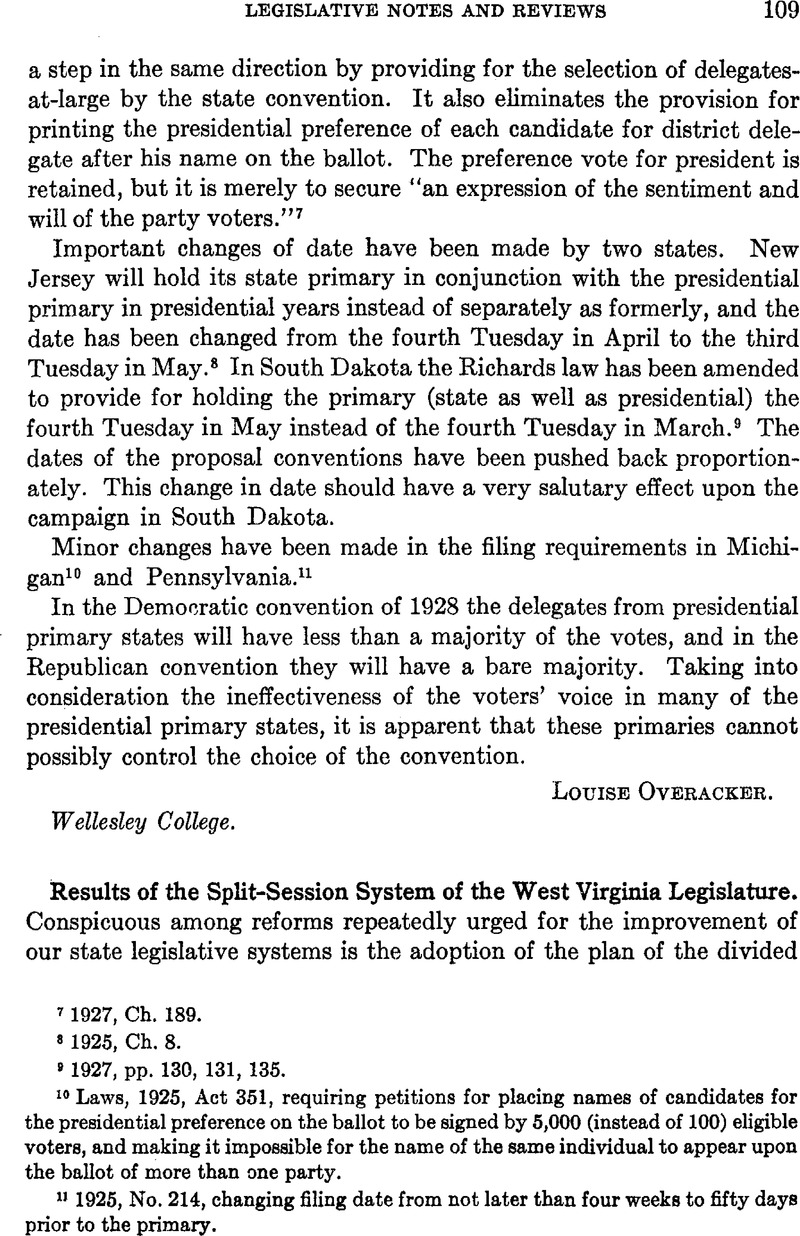No CrossRef data available.
Published online by Cambridge University Press: 01 August 2014

1 Senator Nathan Strauss, Jr., of New York City, has urged this plan for the state of New York (New York Times, January 10, 1926). Senator George Woodward, of Philadelphia, suggested the idea to the Pennsylvania legislature of 1927.
2 See article by the late Victor J. West in the National Municipal Review of July 1923, on “California—The Home of the Split Session.”
3 For an account of the situation which the split session was intended to correct, see West Virginia Legislative Handbook, 1919, pp. 820–821.
4 The constitutional provision embodying the plan was submitted to the voters of the state at the general election of 1920. A total of 160,929 votes were cast in favor of the amendment; 122, 744 were cast against it. At the same election the total gubernatorial vote was almost double the total vote on the amendment proposal. It is also significant that in twelve of the rural counties the vote was overwhelmingly against the amendment, while in six of the more populous ones the vote was heavily in its favor. In the remaining counties the vote was fairly evenly divided. West Virginia Legislative Handbook, 1921, p. 365.
5 Constitution of West Virginia, Art. VI, Sect. 22. The California provision differs in important respects from the West Virginia provision. In California there is no constitutional restriction on the enactment of legislation during the initial session. Also, in California the initial session may continue for not more than thirty days; the interim may not exceed thirty days; and there is no limitation on the length of the reconvened or final session. The provisions of the two states are the same in the important respect that at the final session no bills may be introduced in either house without the consent of three-fourths of the members. See Constitution of California, Art. IV, Sect. 2.
6 Art. VI, Sect. 51, Sub-sect. D.
7 Art. VII, Sect. 7.
8 Journals of the Senate and House of Delegates, 1921, 1923, 1925, 1927.
9 Senate Journal, April 21, 1927; House Journal, April 27, 1927.
10 Senate Journal, January 26, 1927, pp. 48–49Google Scholar.
11 Public Documents of West Virginia, 1923, Vol. I, pp. 38–39Google Scholar.
12 Abstract and Synopsis of Senate and House Bills and Joint Resolutions, Legislature of West Virginia, Regular Session, 1927.
13 Wheeling, Intelligencer, March 22, 1927Google Scholar.
14 Journal of the House, March 17, 1927; Journal of the Senate, March 16, 1927.
15 Wheeling, Intelligencer, March 24, 1927Google Scholar.
16 West Virginia Legislative Handbook, 1926, p. 285.
17 The Tax Problem in West Virginia, National Industrial Conference Board, 1925, p. 178Google Scholar.
18 May 2, 1927.
19 April 25, 1927.
Comments
No Comments have been published for this article.